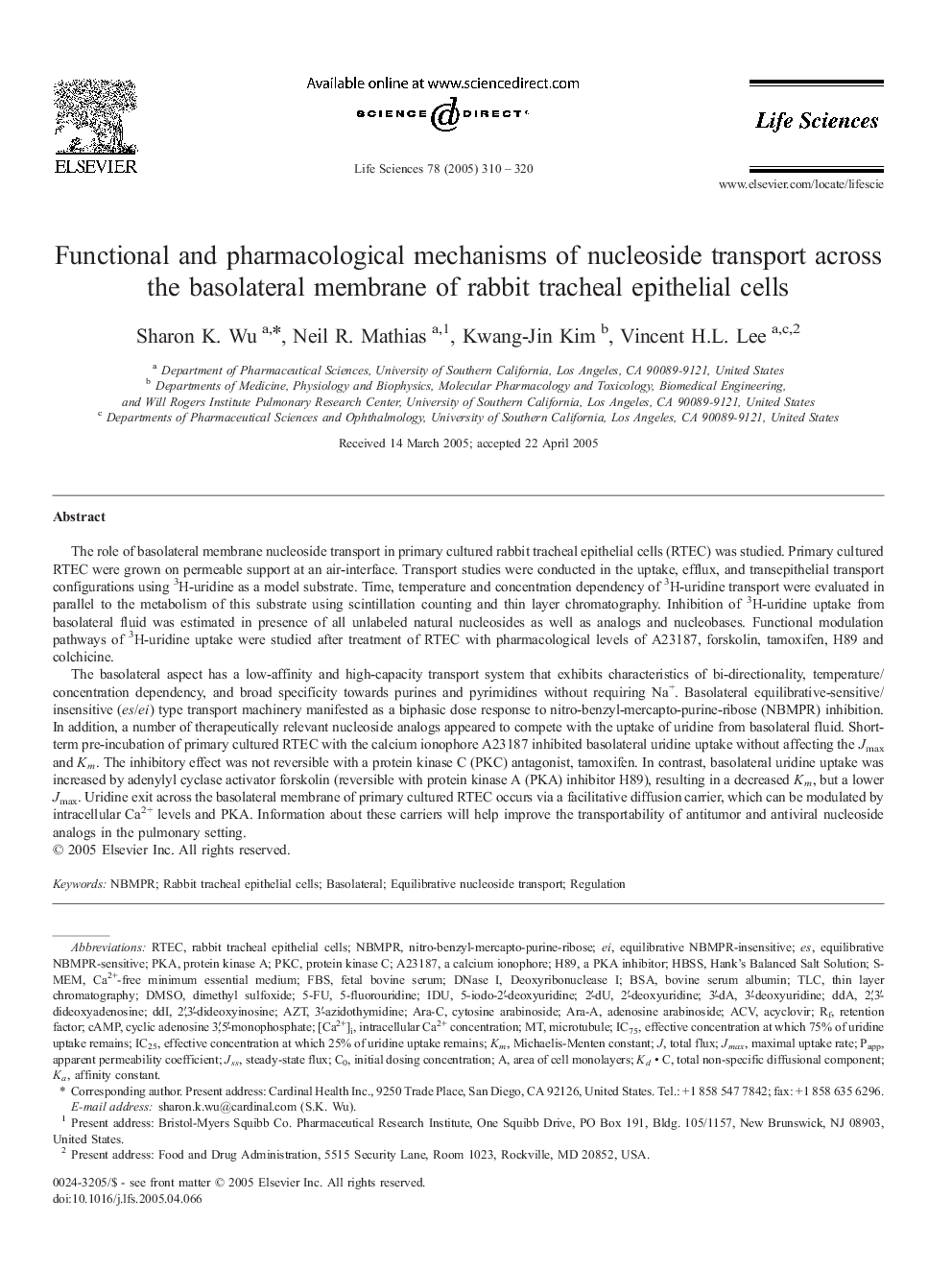| Article ID | Journal | Published Year | Pages | File Type |
|---|---|---|---|---|
| 9012619 | Life Sciences | 2005 | 11 Pages |
Abstract
The basolateral aspect has a low-affinity and high-capacity transport system that exhibits characteristics of bi-directionality, temperature/concentration dependency, and broad specificity towards purines and pyrimidines without requiring Na+. Basolateral equilibrative-sensitive/insensitive (es/ei) type transport machinery manifested as a biphasic dose response to nitro-benzyl-mercapto-purine-ribose (NBMPR) inhibition. In addition, a number of therapeutically relevant nucleoside analogs appeared to compete with the uptake of uridine from basolateral fluid. Short-term pre-incubation of primary cultured RTEC with the calcium ionophore A23187 inhibited basolateral uridine uptake without affecting the Jmax and Km. The inhibitory effect was not reversible with a protein kinase C (PKC) antagonist, tamoxifen. In contrast, basolateral uridine uptake was increased by adenylyl cyclase activator forskolin (reversible with protein kinase A (PKA) inhibitor H89), resulting in a decreased Km, but a lower Jmax. Uridine exit across the basolateral membrane of primary cultured RTEC occurs via a facilitative diffusion carrier, which can be modulated by intracellular Ca2+ levels and PKA. Information about these carriers will help improve the transportability of antitumor and antiviral nucleoside analogs in the pulmonary setting.
Keywords
PKC2′,3′-DideoxyadenosineJSSara-ADeoxyribonuclease IDDAbasolateralNBMPRA23187AZTACVH89cytosine arabinosideIdUDDIpKaHBSSFBSDNase I5-FUTLC2′,3′-dideoxyinosine2′-deoxyuridine5-fluorouridine5-Iodo-2′-deoxyuridineBSAcAMPDMSO[Ca2+]icyclic adenosine 3′,5′-monophosphateAra-CAcyclovirbovine serum albuminJmaxMichaelis-Menten constantDimethyl sulfoxideMicrotubulefetal bovine serumSteady-state fluxapparent permeability coefficientintracellular Ca2+ concentrationRetention factorHank's balanced salt solutionRegulationAffinity constantPappprotein kinase AProtein kinase Cthin layer chromatography
Related Topics
Health Sciences
Medicine and Dentistry
Cardiology and Cardiovascular Medicine
Authors
Sharon K. Wu, Neil R. Mathias, Kwang-Jin Kim, Vincent H.L. Lee,
